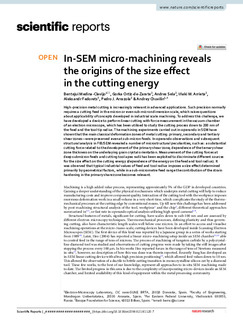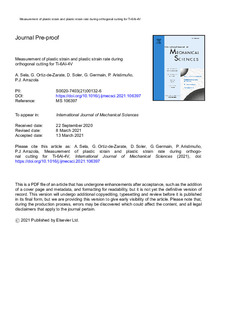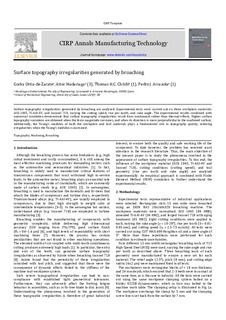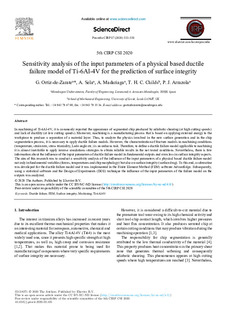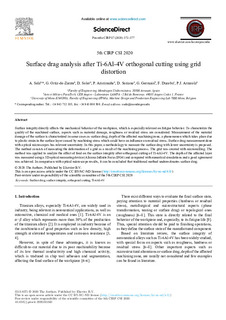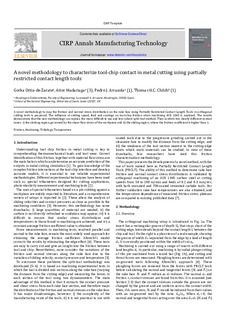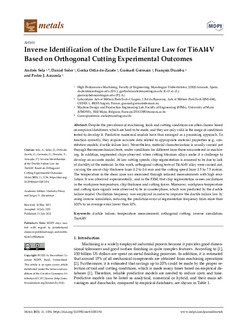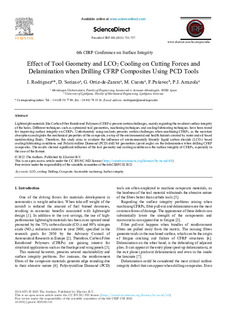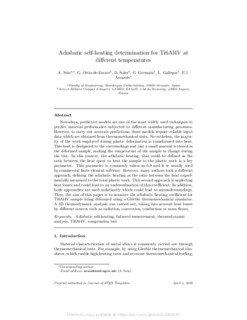Buscar
Mostrando ítems 1-10 de 10
In-SEM micro-machining reveals the origins of the size effect in the cutting energy
(Springer Nature, 2021)
High-precision metal cutting is increasingly relevant in advanced applications. Such precision normally requires a cutting feed in the micron or even sub-micron dimension scale, which raises questions about applicability ...
Measurement of plastic strain and plastic strain rate during orthogonal cutting for Ti-6Al-4V
(Elsevier Ltd., 2021)
Finite Element Modelling used to predict machining outcomes needs to be supplied with the appropriate material thermomechanical properties which are obtained by specific testing devices and methodologies. However, these ...
Surface topography irregularities generated by broaching
(Elsevier Ltd., 2022)
Surface topography irregularities generated by broaching are analysed. Experimental tests were carried out on three workpiece materials: AISI 1045, Ti-6Al-4V, and Inconel 718, varying the cutting speed, rise per tooth, and ...
Sensitivity analysis of the input parameters of a physical based ductile failure model of Ti-6Al-4V for the prediction of surface integrity
(Elsevier Ltd, 2020)
In machining of Ti-6Al-4V, it is commonly reported the appearance of segmented chip produced by adiabatic shearing (at high cutting speeds) and lack of ductility (at low cutting speeds). Moreover, machining is a manufacturing ...
Surface drag analysis after Ti-6Al-4V orthogonal cutting using grid distortion
(Elsevier Ltd, 2020)
Surface integrity directly affects the mechanical behavior of the workpiece, which is especially relevant on fatigue behavior. To characterize the quality of the machined surface, aspects such as material damage, roughness ...
A novel methodology to characterize tool-chip contact in metal cutting using partially restricted contact length tools
(2021)
A novel methodology to map the friction and normal stress distribution on the rake face using Partially Restricted Contact Length Tools in orthogonal cutting tests is proposed. The influence of cutting speed, feed and ...
Inverse Identification of the Ductile Failure Law for Ti6Al4V Based on Orthogonal Cutting Experimental Outcomes
(MDPI, 2021)
Despite the prevalence of machining, tools and cutting conditions are often chosen based on empirical databases, which are hard to be made, and they are only valid in the range of conditions tested to develop it. Predictive ...
Correcting distortions of thin-walled machined parts by machine hammer peening
(Elsevier, 2023)
Thin-walled aerostructural components frequently get distorted after the machining process. Reworking to correct distortions or eventually rejecting parts significantly increases the cost. This paper proposes a new approach ...
Effect of Tool Geometry and LCO2 Cooling on Cutting Forces and Delamination when Drilling CFRP Composites Using PCD Tools
(Elsevier, 2022)
Lightweight materials like Carbon Fiber Reinforced Polymers (CFRPs) present certain challenges, mainly regarding the resultant surface integrity of the holes. Different techniques such as optimized tool geometries, machining ...
Adiabatic self-heating determination for Ti6Al4V at different temperatures
(Elsevier, 2023)
Nowadays, numerical models are one of the most widely used techniques to predict material performance subjected to different manufacturing processes. However, to obtain accurate predictions, these models require reliable ...


